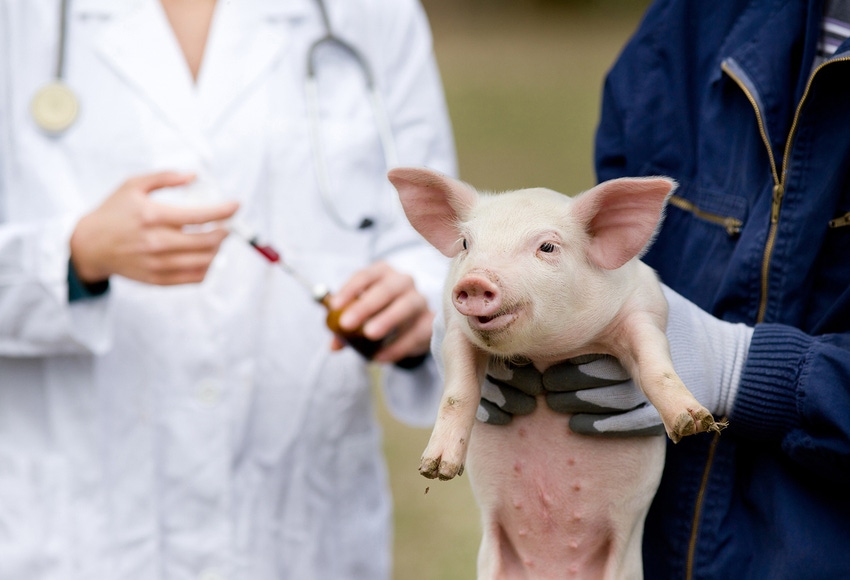Since its first characterization in U.S. pigs, the influenza D virus has subsequently been discovered in pigs in Italy, and its presence in cattle in other countries would suggest that IDV is likely present in pigs there, too.
August 15, 2017

By Russ Daly, DVM, MS, DACVPM; South Dakota State University Extension Veterinarian/Professor
Pork producers and veterinarians deal on a regular basis with the effects of swine influenza in growing pigs and the breeding herd. While influenza type A viruses rightfully get most of the attention, the latest development in the influenza world, the discovery of Influenza type D virus, has given researchers a new potential pathogen to investigate.
While influenza A viruses, strains of which can affect pigs as well as a great number of other hosts, have been recognized for decades, IDV was first characterized in 2011. While IDV has more frequently been found in cattle populations, pigs sick from respiratory disease were the first animals from which it was isolated. Subsequently, researchers have found the virus in sheep and goats as well, and have infected ferrets with IDV.
Because of its higher frequency in cattle, more IDV work in that species has been published compared to pigs. However, since its first characterization in U.S. pigs, IDV has subsequently been discovered in pigs in Italy, and its presence in cattle in other countries would suggest that IDV is likely present in pigs there, too.
Some recent work, done in conjunction between South Dakota State University and the Guangdong Academy of Agricultural Sciences, found IDV to be present in pigs in China. Investigators tested for IDV in 19 nasal swabs and 45 lung samples from pigs with severe respiratory disease in Guangdong Province. Influenza D virus was found in 37% of the nasal swabs and 29% of the lung samples. In contrast, only 2% of healthy pigs were found to harbor IDV in nasal swab samples. The rate of IDV detection in these ill pigs in China was higher than the rates reported elsewhere from other countries.
SDSU, particularly Feng Li and his group, provided the experimental design and data interpretation for this work. Additionally, SDSU provided reagents for the IDV testing, which was performed in Shao-Lun Zhai’s laboratory at Guangdong. Zhai is a visiting scholar in Li’s lab at SDSU.
The role of IDV in swine respiratory disease still needs to be worked out. When the virus was initially characterized, researchers were able to determine that IDV could infect swine experimentally, with replication in the upper respiratory tract. Pigs mounted an immune response to IDV, and were able to shed it to naïve contacts, who also seroconverted. However, no clinical signs were noted in these infected pigs. This would indicate that IDV is not serving as a primary respiratory pathogen. Its presence in a significant percentage of respiratory illness cases, however, raises more questions about its role.
This latest SDSU work provides further proof that IDV is widespread throughout the world. With influenza viruses notorious for shifting and changing over time, the veterinary and virology world should be keeping a close eye on IDV and its role in swine respiratory disease.
References
Zhai, S., Zhang, H., Chen, S., Zhou, X., Lin, T., Liu, R....Li, F. (2017). Influenza D Virus in Animal Species in Guangdong Province, Southern China. Emerging Infectious Diseases, 23(8), 1392-1396. https://dx.doi.org/10.3201/eid2308.170059.
Hause BM, Ducatez M, Collin EA, Ran Z, Liu R, et al. (2013) Isolation of a Novel Swine Influenza Virus from Oklahoma in 2011 Which Is Distantly Related to Human Influenza C Viruses. PLoS Pathog 9(2): e1003176.
You May Also Like



